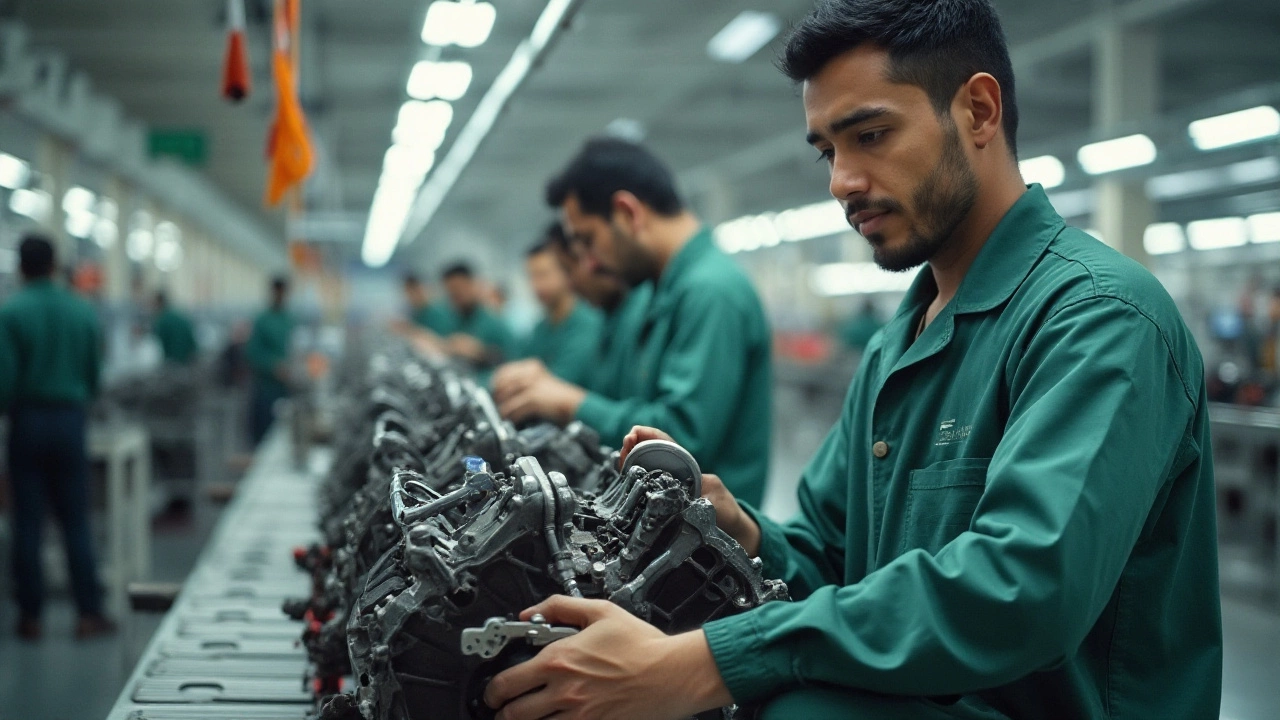Automobile Manufacturing in India: What You Need to Know
India’s auto sector is buzzing. Every day you hear about new factories, electric‑car pilots, and export deals. If you’re curious about how cars are made here, where the big players sit, and what’s coming next, you’re in the right spot.
Where the Factories Live
The biggest auto hubs are in Maharashtra, Tamil Nadu, and Gujarat. Mumbai and Pune host several multinational plants, while Chennai is the home of a massive assembly line that churns out both sedans and SUVs. Gujarat’s special economic zones attract fresh investment thanks to easy land deals and steady power supply. These locations matter because they decide logistics cost, skilled‑labour pool, and how fast a company can ship cars to the market.
For anyone looking to set up a new plant, the rule of thumb is: pick a state with solid road links, a reliable power grid, and an existing supplier network. The closer you are to parts makers—like engine blocks and chassis components—the less you spend on transportation.
Technology Shifts and the Rise of Green Cars
Electric vehicles (EVs) are no longer a niche. The government’s push for BS6 emission standards and subsidies for EV chargers is forcing manufacturers to upgrade their lines. Modern factories now use robotic welding, AI‑driven quality checks, and digital twins to simulate production before a single bolt is tightened.
These upgrades improve yield and cut waste. A plant that adopted a lean 7‑waste approach reported a 12% drop in scrap rates in just six months. If you’re a supplier, offering smart‑sensor kits or predictive‑maintenance services can open new revenue streams.
At the same time, imported car rules—like the 25‑year age limit—keep certain market segments safe for domestic makers. That rule means older used cars can’t flood the market, which helps local manufacturers protect price points and maintain brand value.
Jobs in the auto sector are evolving too. While traditional welding roles still exist, there’s a growing demand for data analysts, automation engineers, and software testers. If you’re planning a career move, upskilling in PLC programming or robotics can give you a leg up.
Export potential is another magnet for investors. Indian‑built cars are already making headlines in Africa and the Middle East thanks to competitive pricing and robust design. Companies that can certify their vehicles to international safety standards find it easier to tap these markets.
So, what’s the bottom line? Choose a plant location with strong logistics, invest in modern automation, stay ahead of emission norms, and keep an eye on export opportunities. Whether you’re a startup, a supplier, or a job seeker, the Indian automobile manufacturing scene offers clear paths to growth.

Ford and GM Failures in India: What Went Wrong?
Ford and GM, two global automotive giants, failed to crack the Indian market. Despite their global muscle, their brands never became household names among Indian car buyers. Local consumer tastes, pricing strategies, and after-sales support all played a part in their struggles. This article looks closely at why their game plan flopped and what future automakers can learn from their missteps. Get real facts, market stories, and practical takeaways for anyone interested in India's car scene.

Are Chinese-Made Cars Sold in the US?
This article explores the presence of Chinese-made cars in the US market, examining how they've made their way from China's factories to American roads. Cars built in China have started to appear in the US, despite various challenges. We'll look into which brands are leading the charge and what this means for US consumers. Additionally, we'll discuss the implications for the automobile manufacturing landscape in India.

Unraveling the High Costs of Indian Cars: Reasons and Insights
The price tag on an Indian car often leaves consumers wondering why these vehicles are priced steeply. Several factors contribute to this phenomenon, including the impact of import duties, the cost of raw materials, and the integration of advanced technology. Moreover, the growing demand for specific models and the effect of new emissions and safety regulations play a significant role. This article delves into the reasons behind the high costs of cars manufactured in India and provides some insights into the dynamics of the automobile market.

Who Manufactures Honda Engines in India? An In-Depth Insight
Honda engines are renowned for their performance and reliability, and understanding their manufacturing in India reveals a significant part of the automobile sector. The production involves a combination of local assembly and sophisticated manufacturing practices. It's important to explore where and how these engines are made, including the facilities and processes involved. The impact on the Indian economy and job market from Honda's operations also offers crucial insights.

Cars and Countries: Exploring the Origins of Iconic Auto Brands Worldwide
The global automotive industry is a sprawling landscape characterized by diversity and innovation. This article takes a deep dive into the history and current status of car brands hailing from various countries, examining which nation has produced the most branded vehicles. By exploring the contributions of countries like India, Japan, Germany, and the United States, readers will gain insight into the automotive giants shaping today's market. This compilation offers interesting details about the origins and evolution of renowned car brands worldwide.



